memorial on theodore roosevelt island. elliot carter photo
By Elliot Carter
Roosevelt Island was once the private property of the Mason family, who operated a cotton and corn plantation on the island. The Masons were a prominent family in the area. George Mason IV was a Constitutional Convention Delegate and his son John was the president of the Potomack Canal Company.
In 1748 they built a chain ferry and landings on the northern edge of the island that connected with Georgetown. Until construction of the Long Bridge in 1809, this was the only river crossing.
The ferry played an interesting role in early American history. The armies of Rochambeau and Lafayette used it as they traveled north to Yorktown in 1781, and George Washington is also known to have used it on several occasions. In 1814 President Madison ferried across the Potomac here as he fled from invading British forces.
George’s son John had began clearing the island around 1800 and started to develop it into a functional plantation. The island that we today experience as a forested wilderness was at this point taken up with carefully laid out fields of crops. A large tree lined boulevard ran north-south down the center of the island and lead visitors to a handsome Georgian Revival style mansion around the current location of the highway overpass.
John had friends in Washington high society, and apparently he maintained a perpetual open house at the mansion, with its well stocked wine cellars and stately ballroom. Presidents Washington, Jefferson, Madison and Monroe; Chief Justice John Marshall, and King Louis of France (the one who got guillotined) are all known to have visited the island.
To the south of the mansion were formal gardens, and a smattering of smaller buildings including slave quarters, kitchens, workshops, and an ice house.
In 1831 the Mason family were forced to leave their mansion on the Potomac. Numerous histories of Theodore Roosevelt Island attribute this to the nuisance of stagnant water and bugs.
Unfortunately that isn’t the case. The definitively researched Historic American Landscape Survey records that “beginning in 1815 [John Mason] endured a series of poor investments and business ventures … unable to pay back his debts, the bank foreclosed on the island and 1,800 acres of Mason's land in northern Virginia, although it became polite convention among local residents to attribute his departure to the terrible mosquitoes.”
Pontoon bridge to THE ISLAND in 1865. Matthew Brady photo
During the Civil War a pontoon bridge was built and the island housed a hospital and freedman’s camp. In the decades after the war the island became a recreational spot with baseball diamonds and a track.
In 1869 the storied Mason house was partially destroyed by a fire. Ruins remained at the site until the 1930’s when island was reimagined as a memorial to Theodore Roosevelt.
The Mason name lives on, even if our collective knowledge about the family has faded. The George Mason Memorial Bridge (aka the 14th street bridge) one mile downriver from the island bears their name, as does the eponymous Virginia university and Mason Neck National Park.
The photographs below of the Mason house ruins were taken as a part of the Historic American Buildings Survey before the site was buried and reforested.

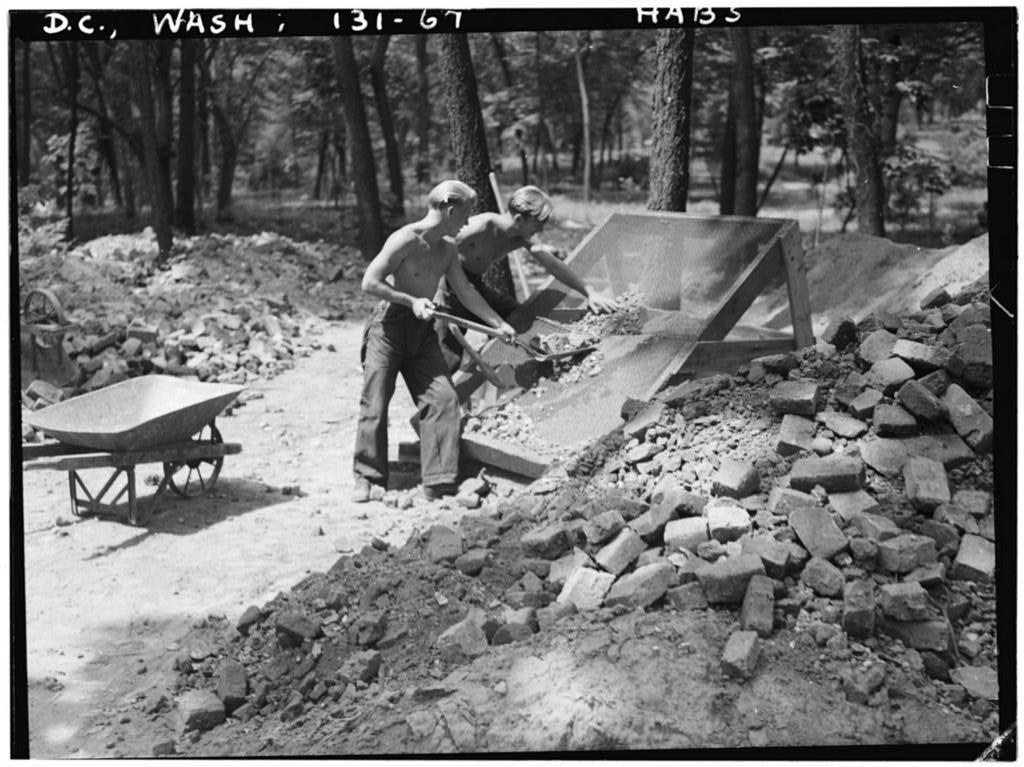
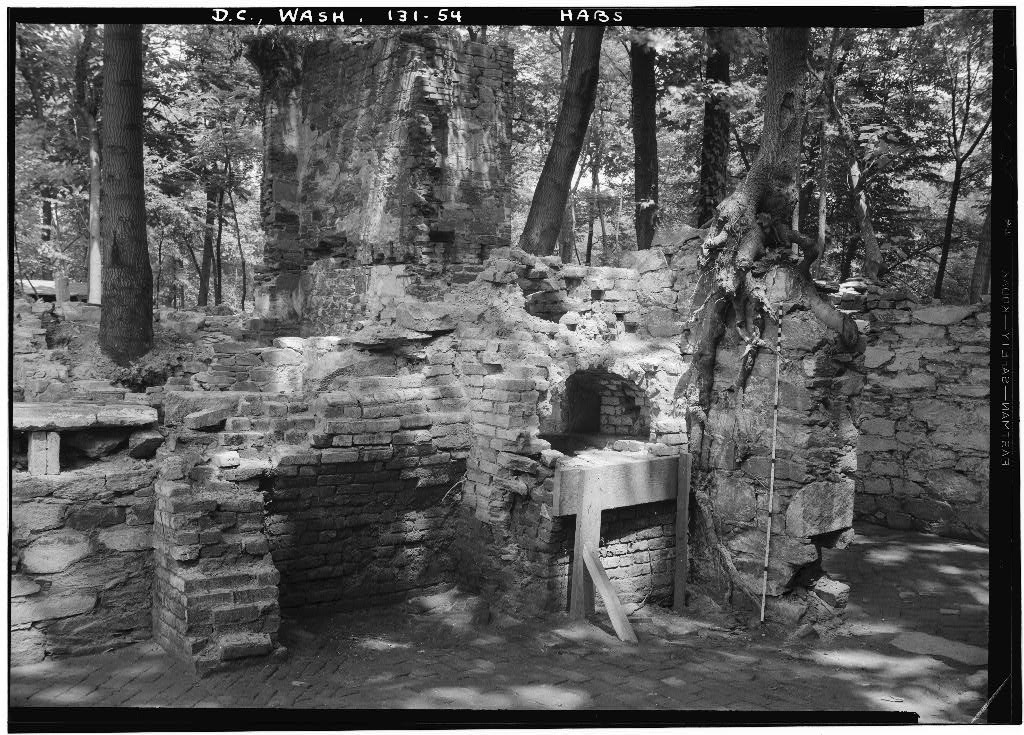
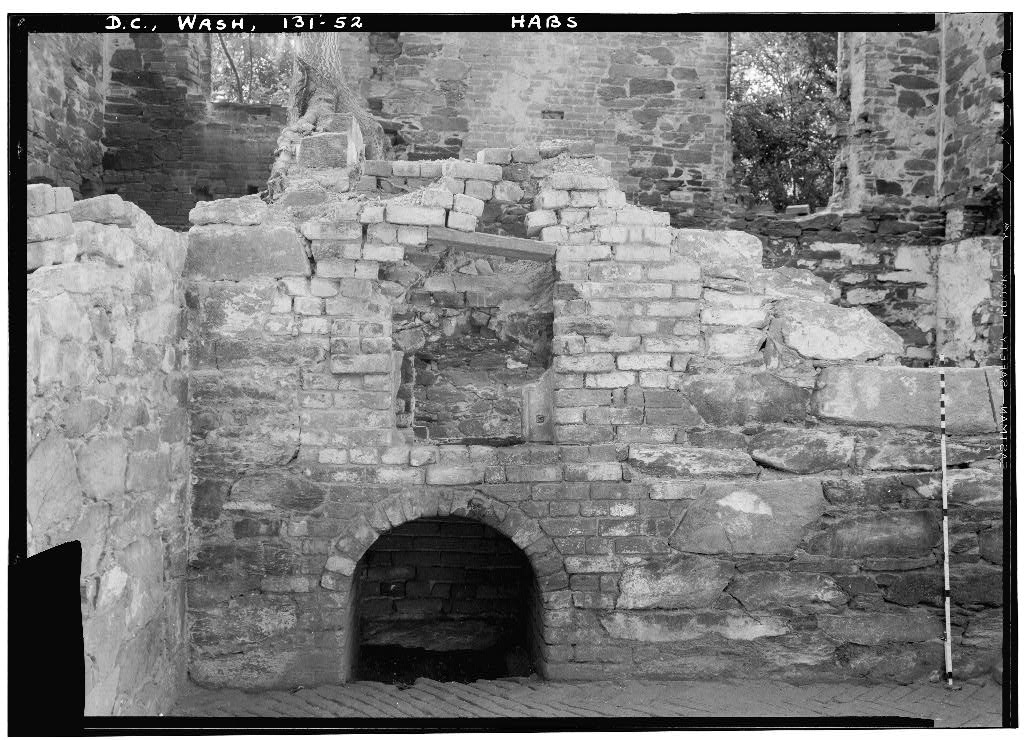
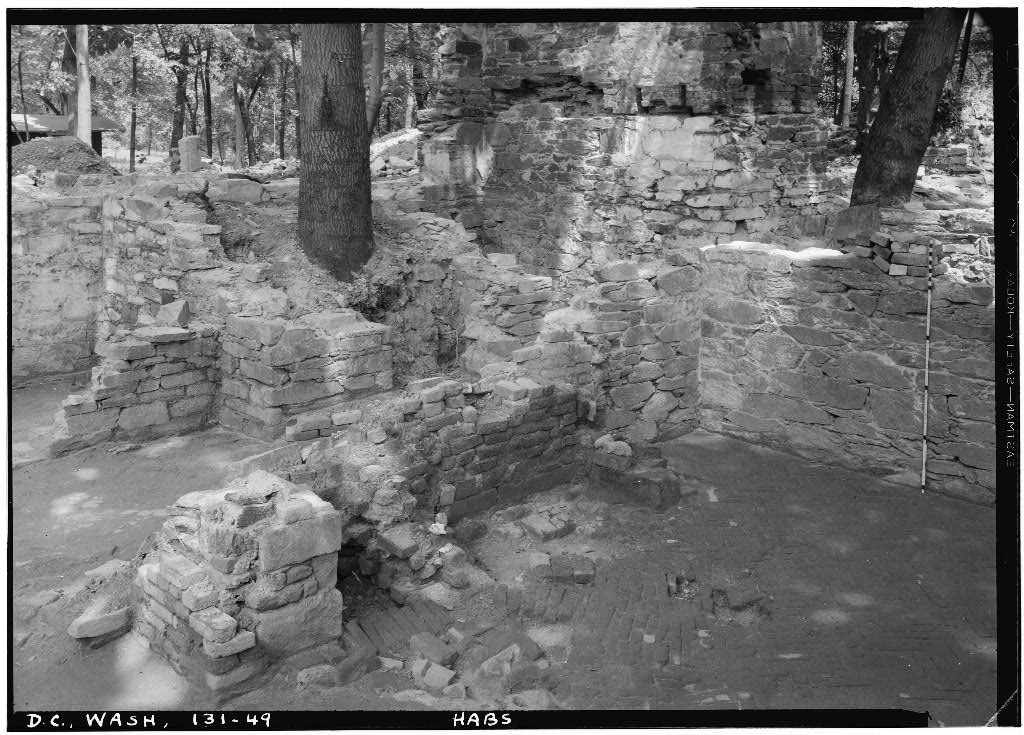
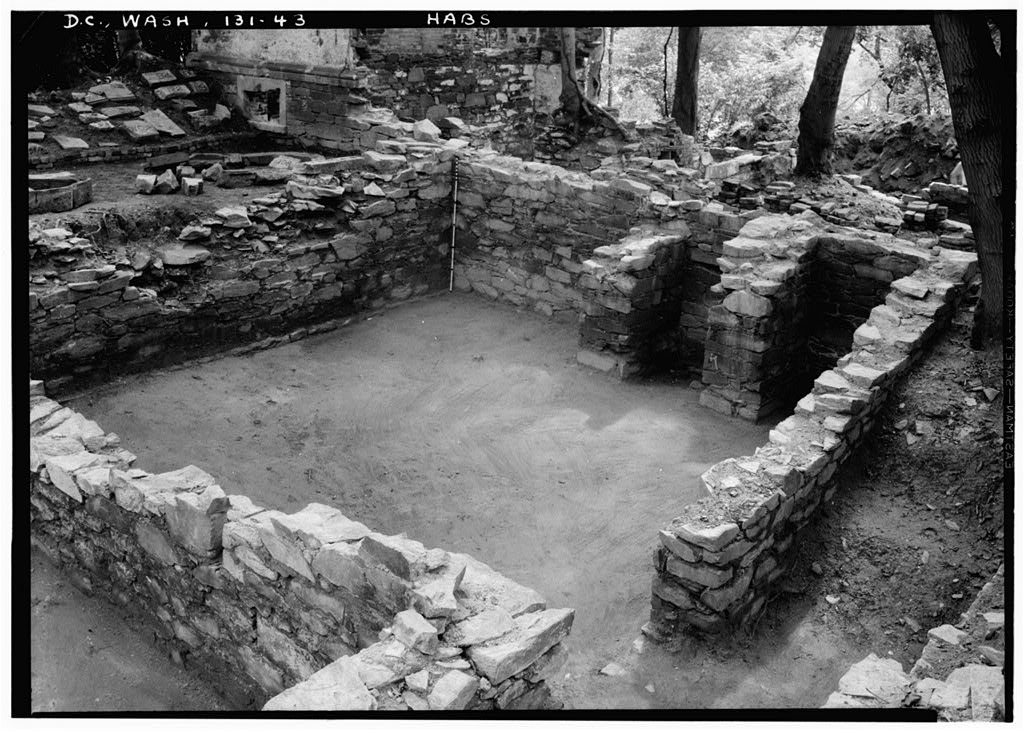
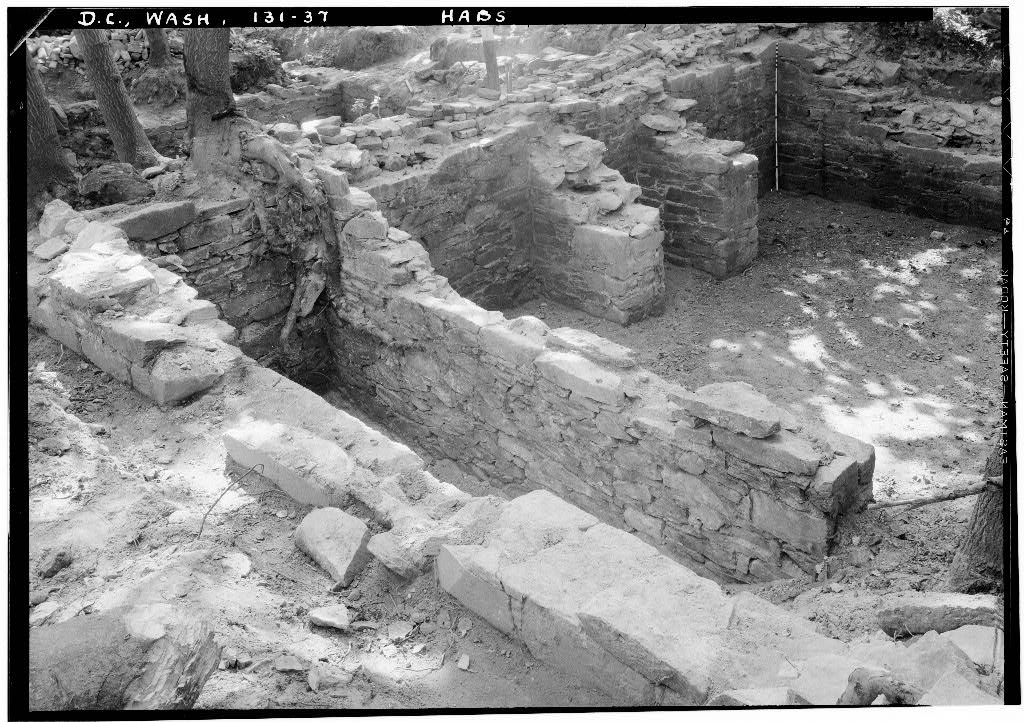
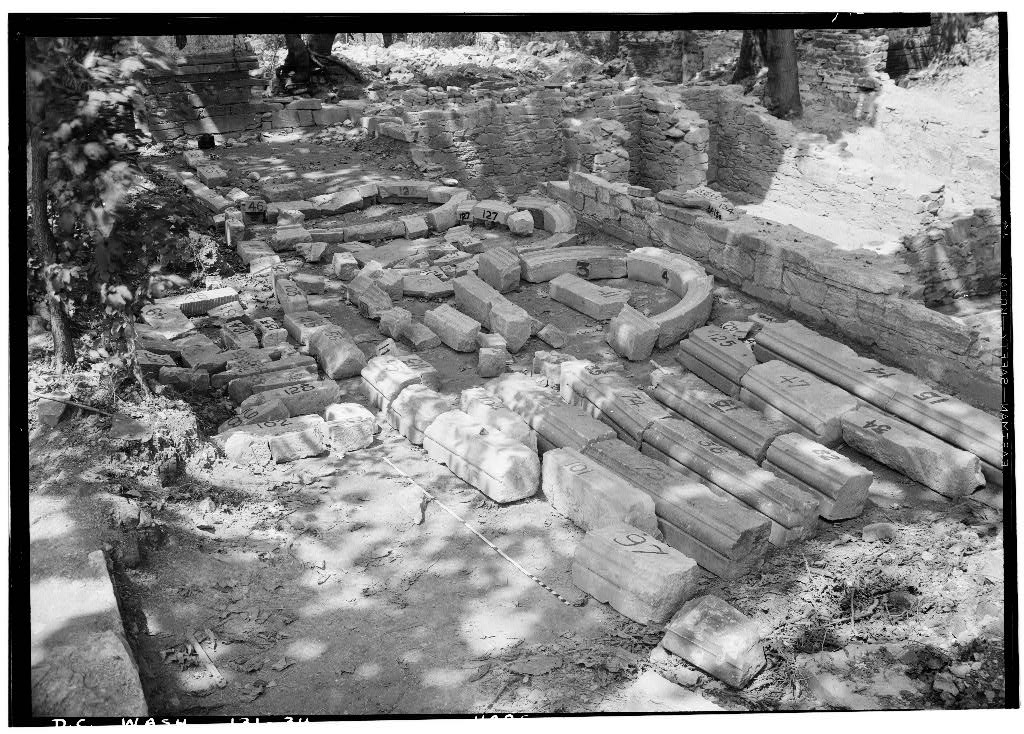

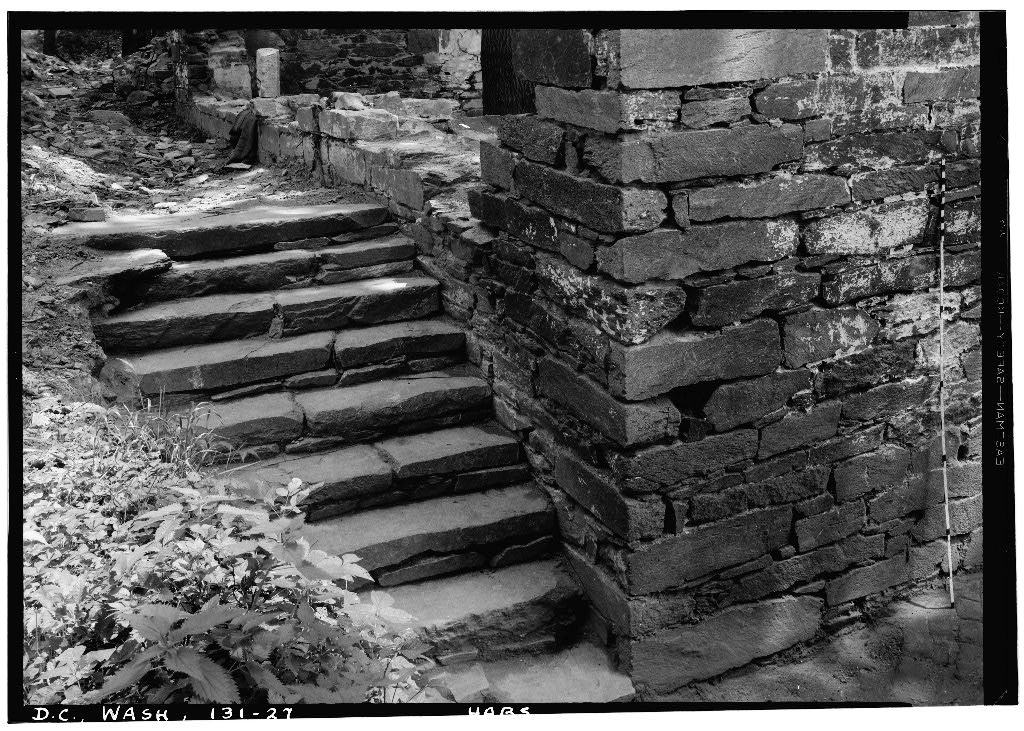
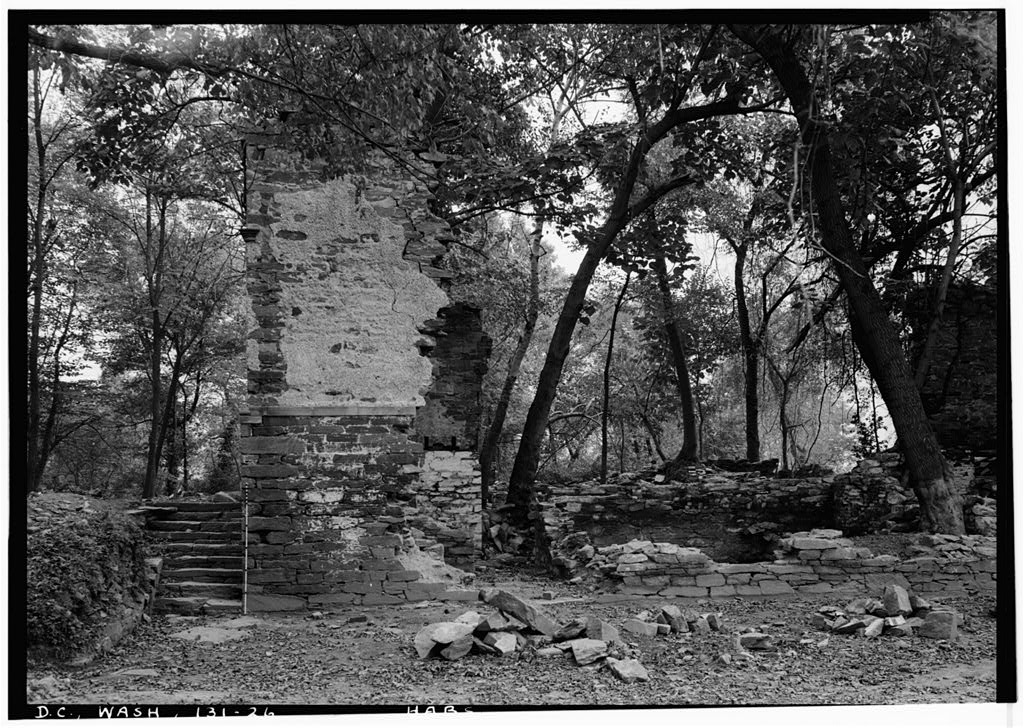
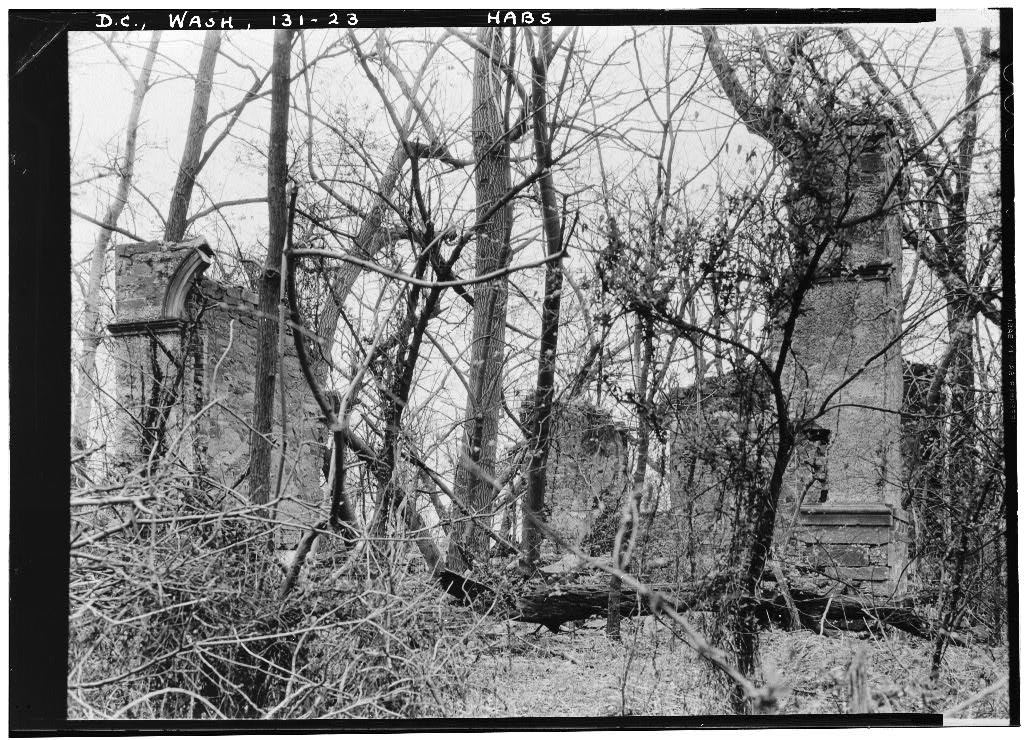
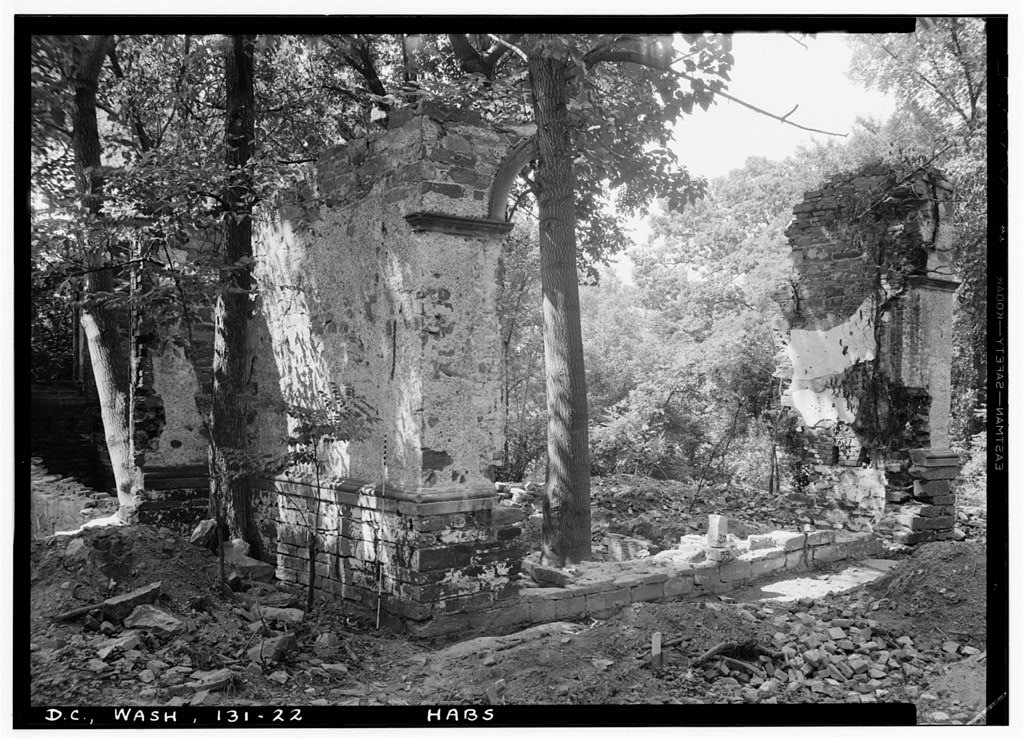
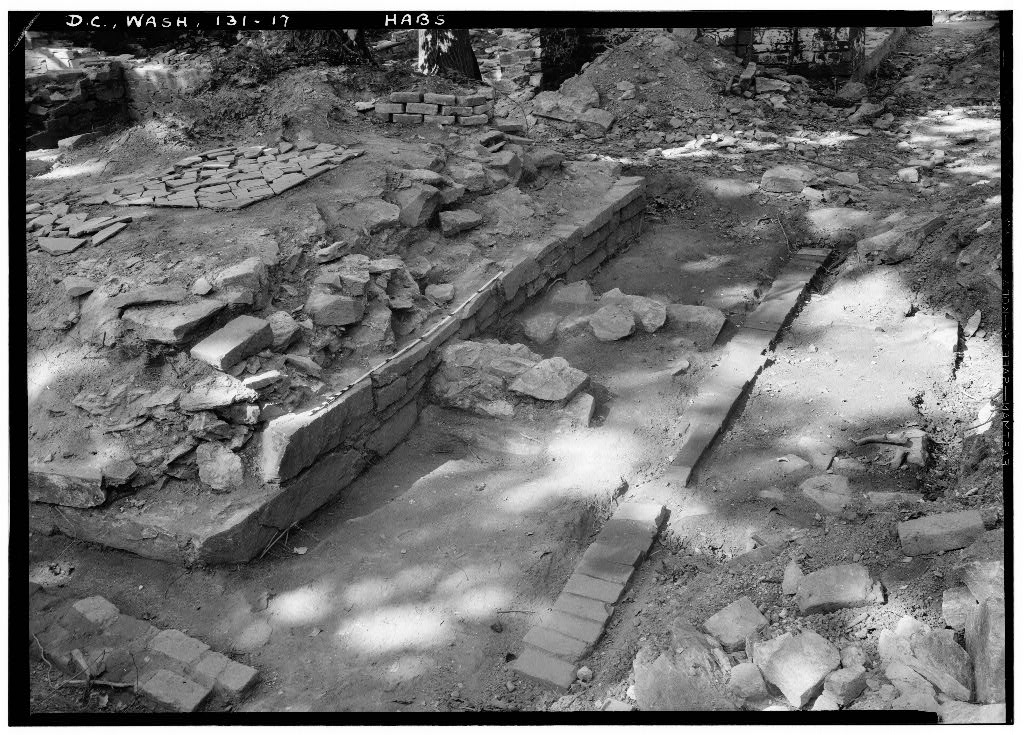
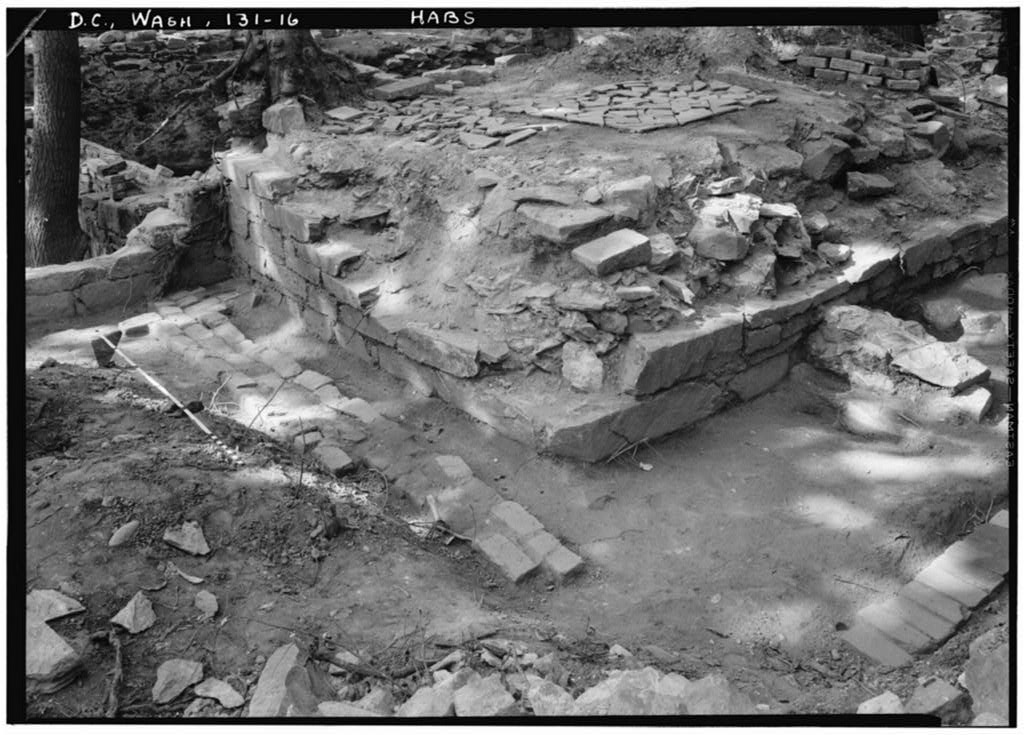
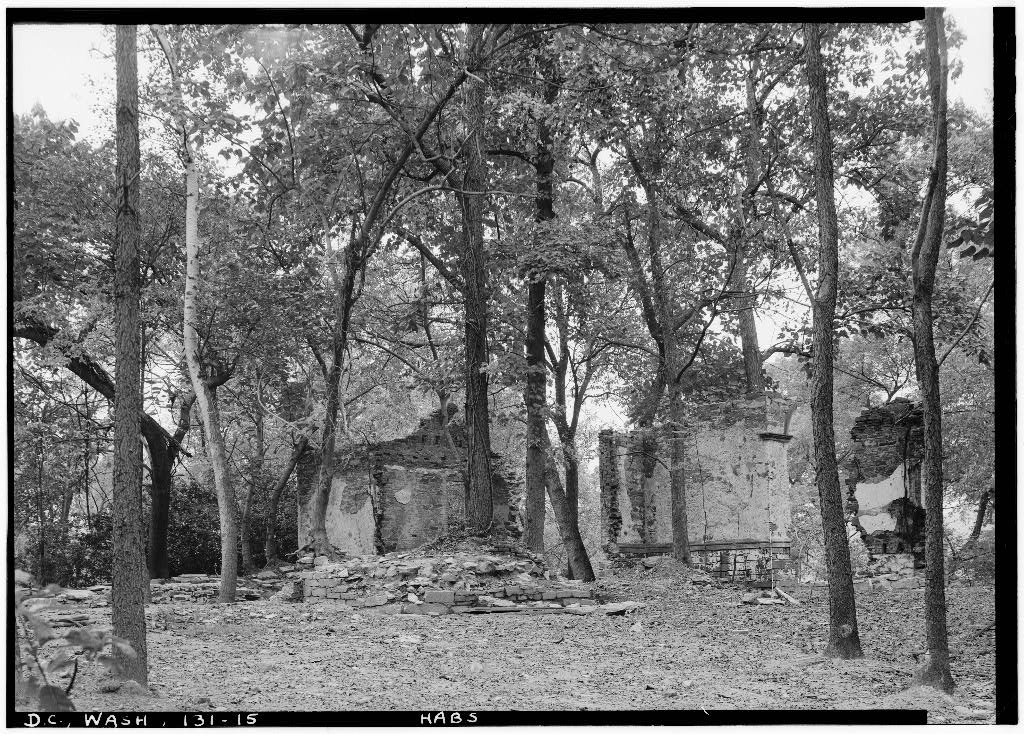
If you enjoyed this article you might also like to read about the old Capitol building stones in Rock Creek Park.





